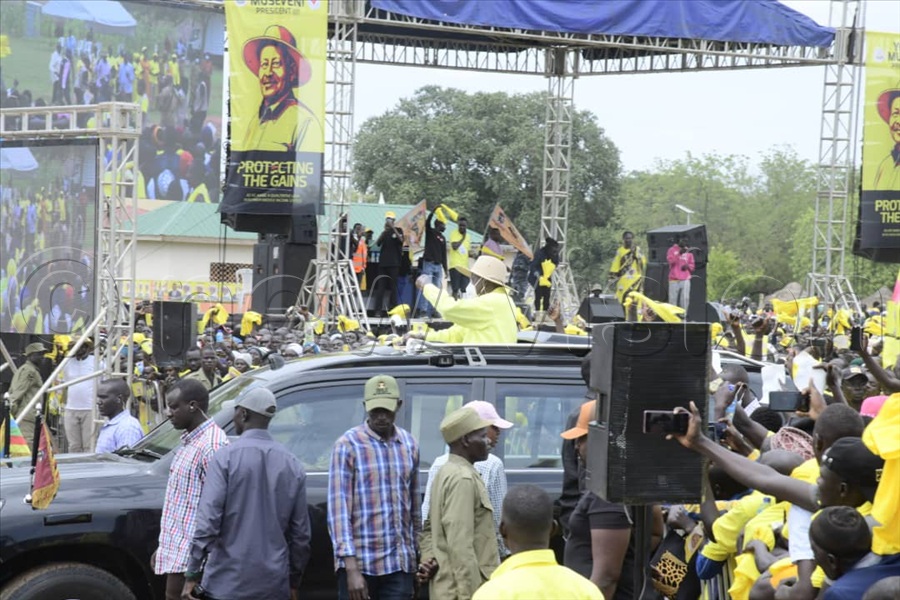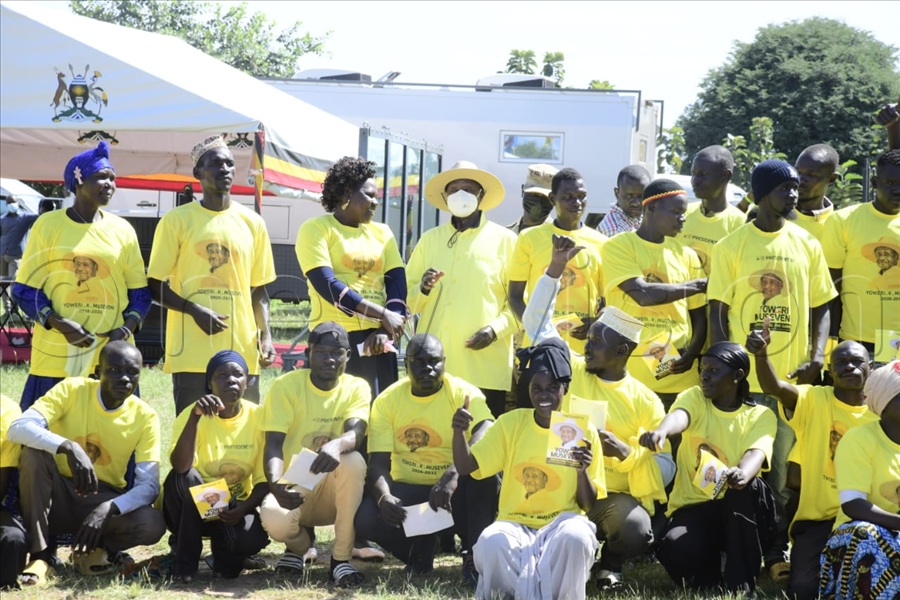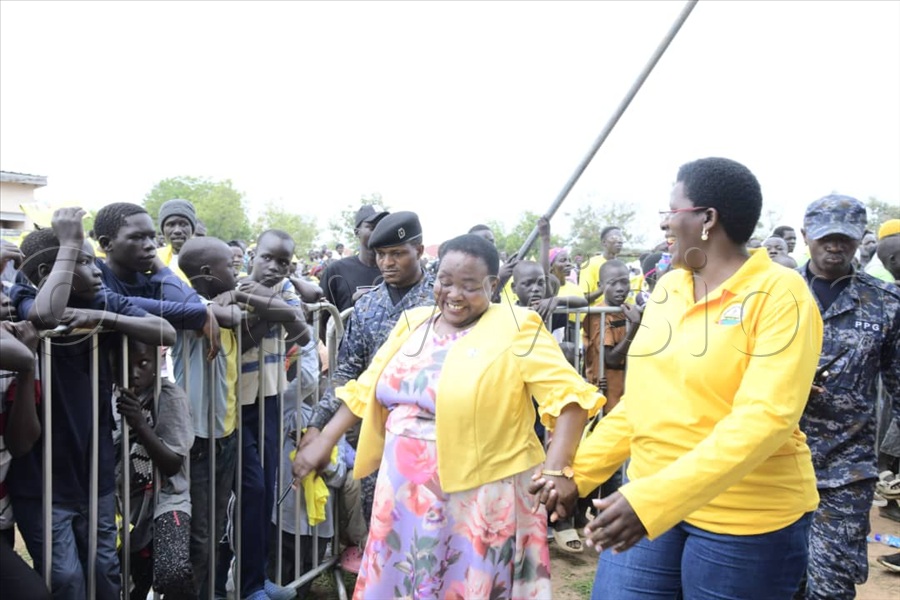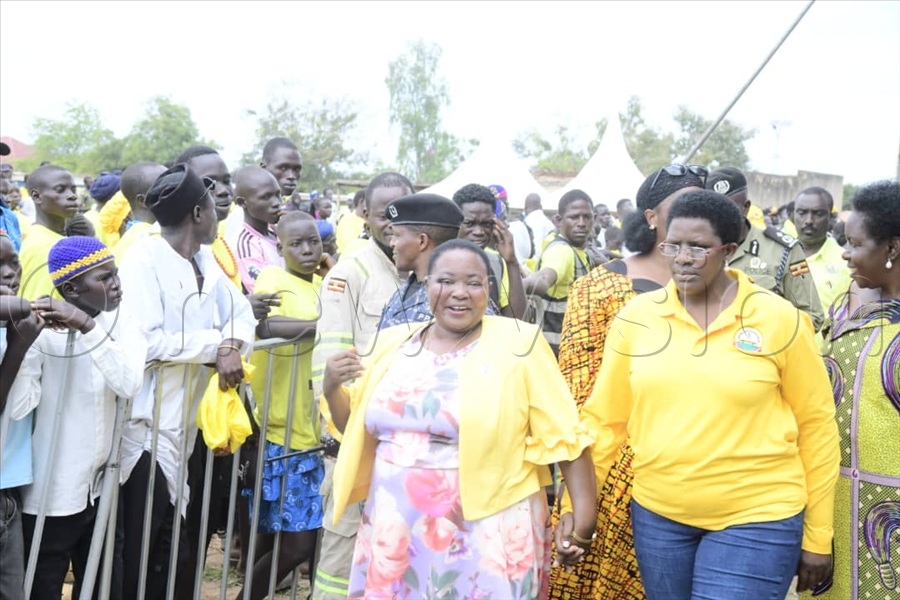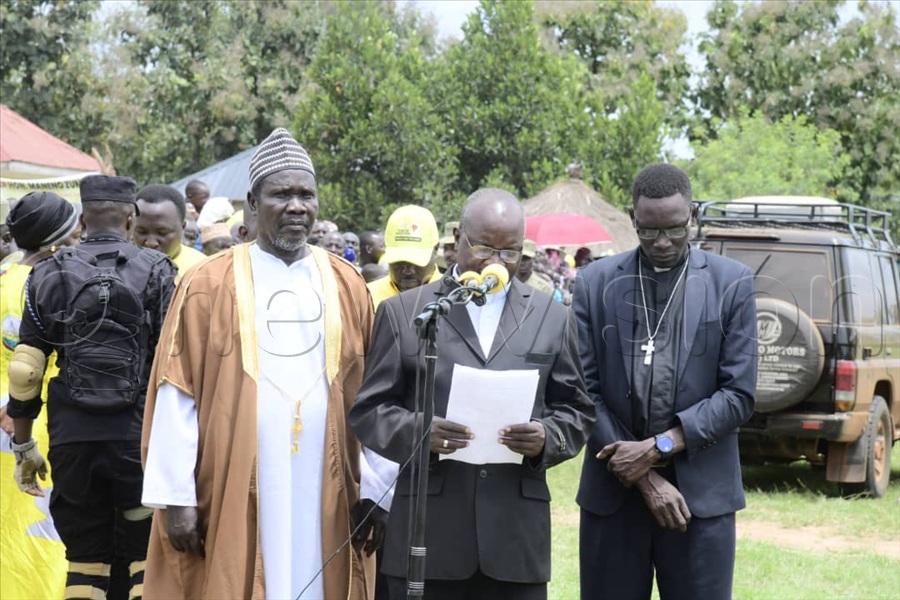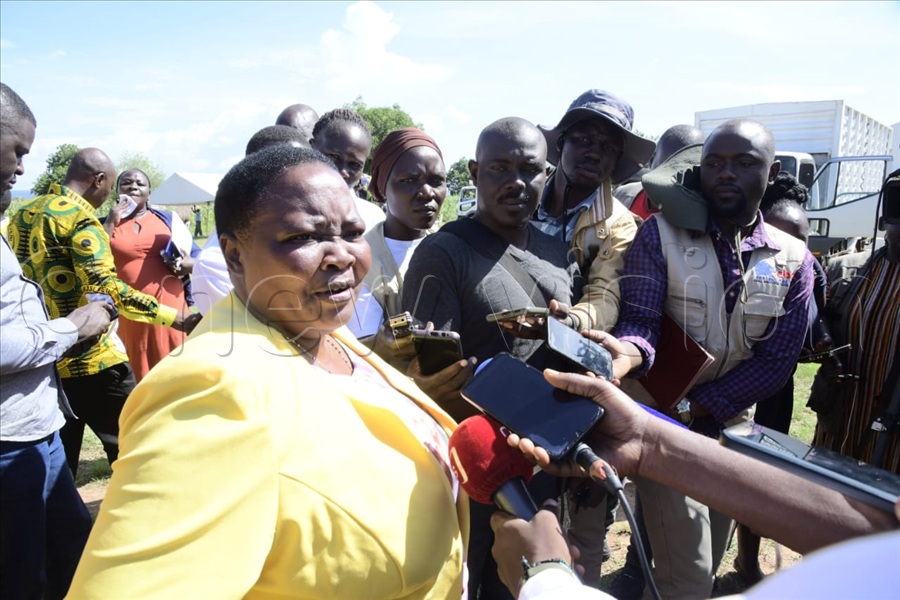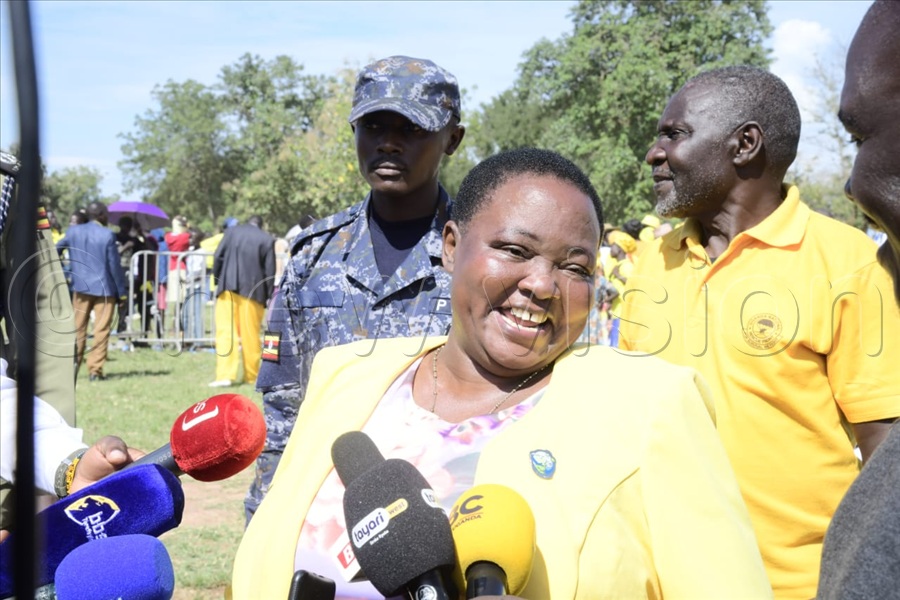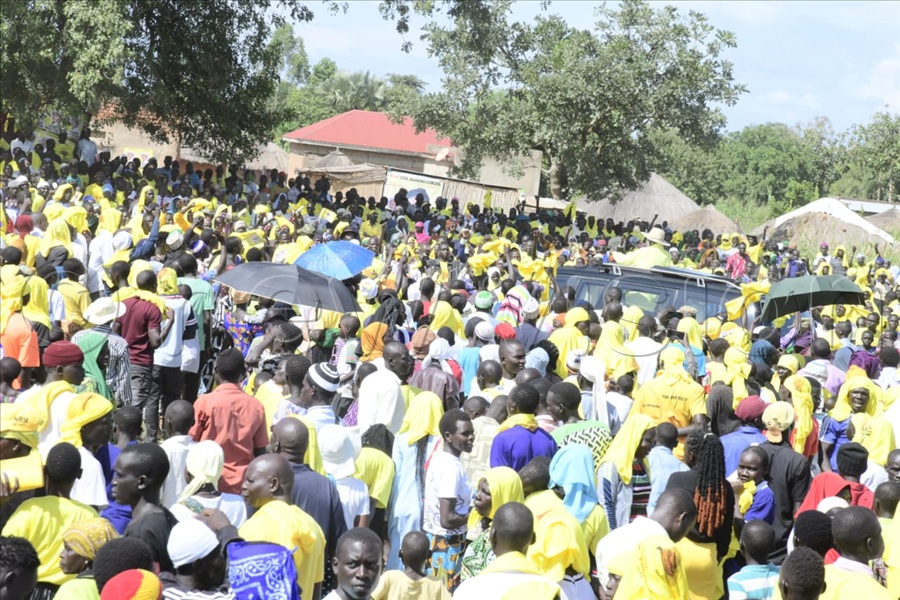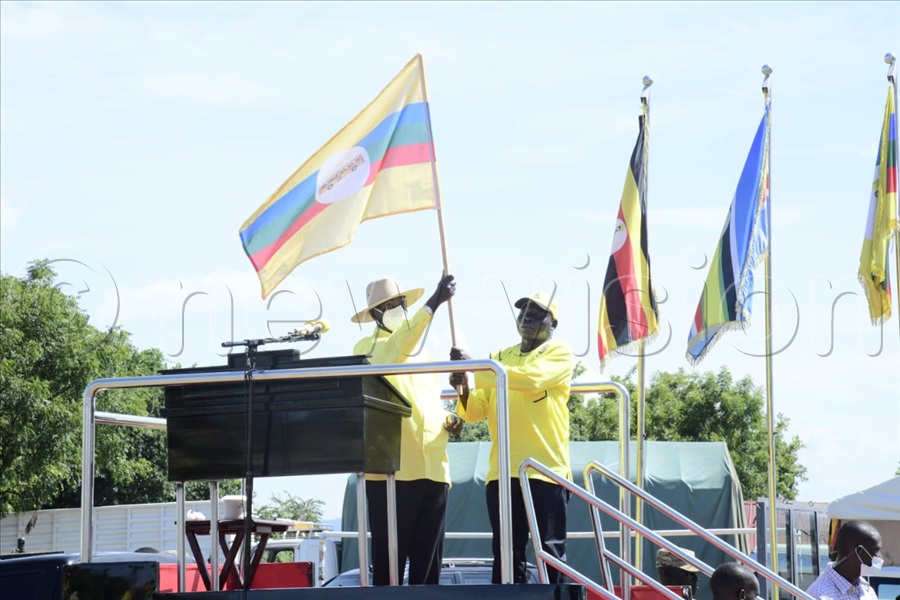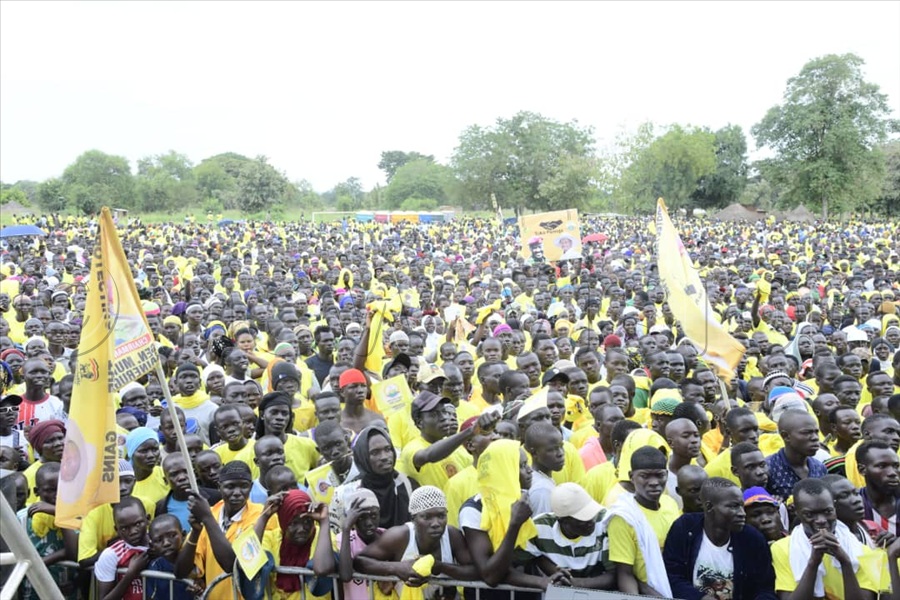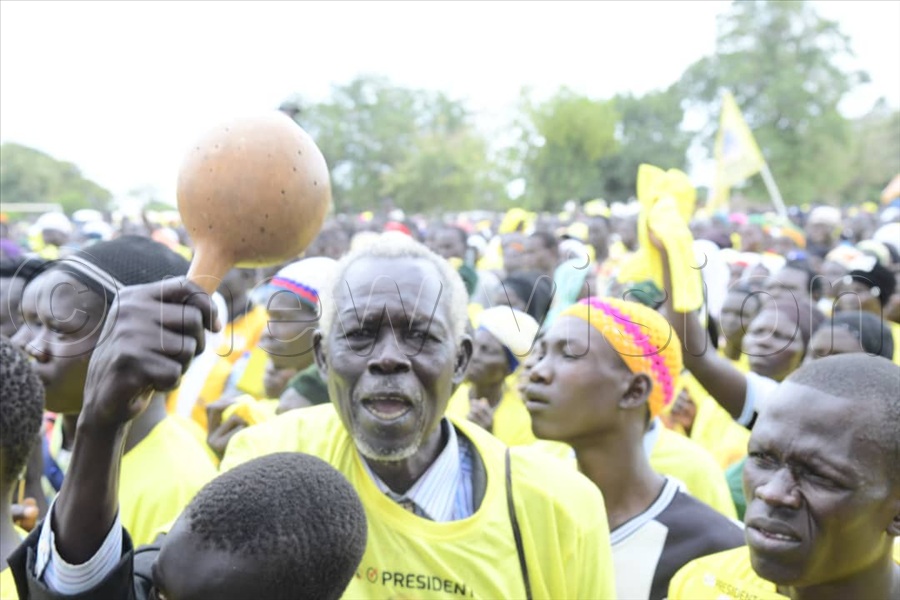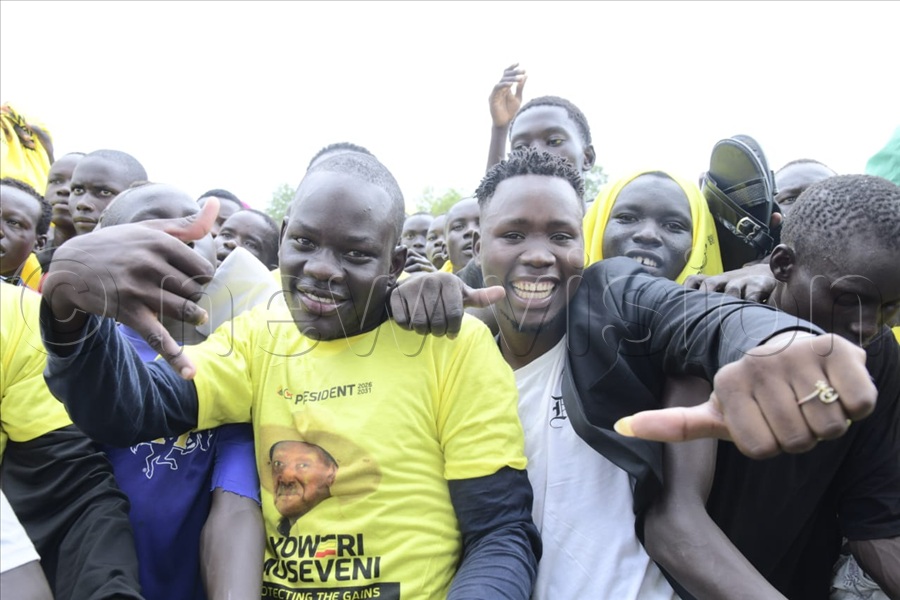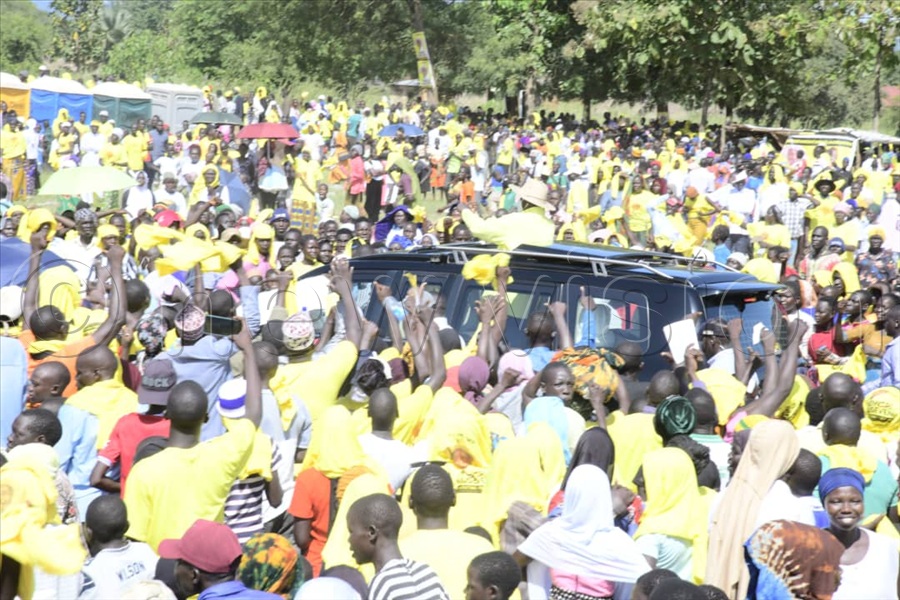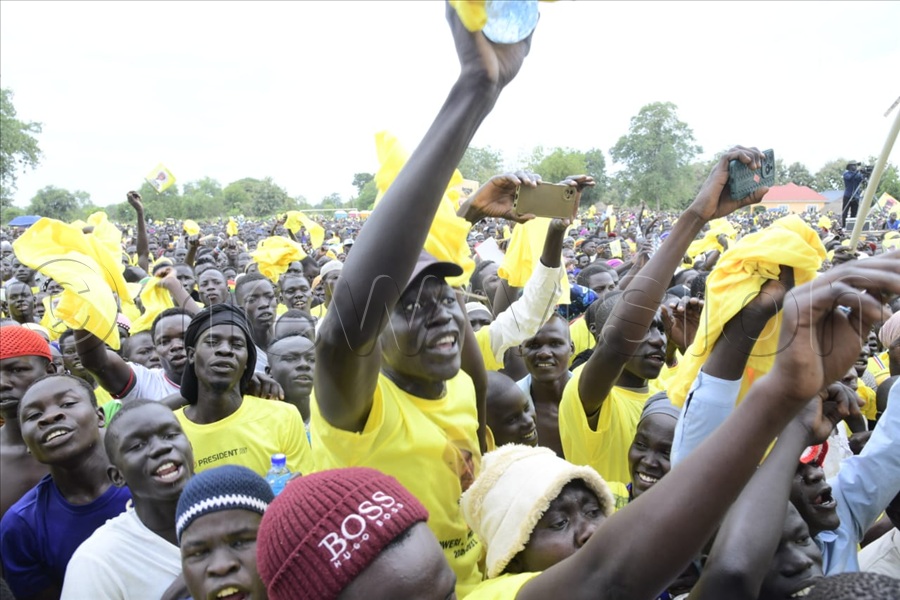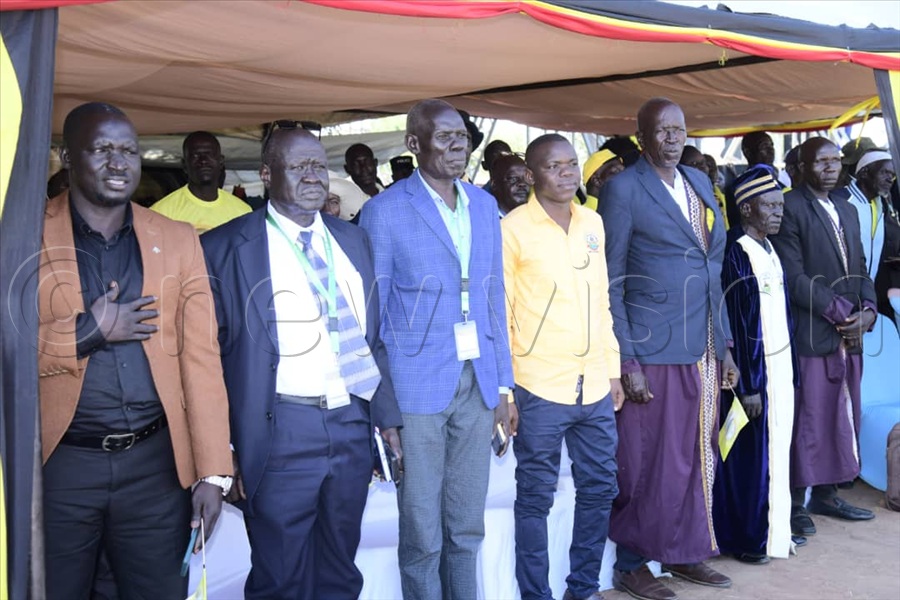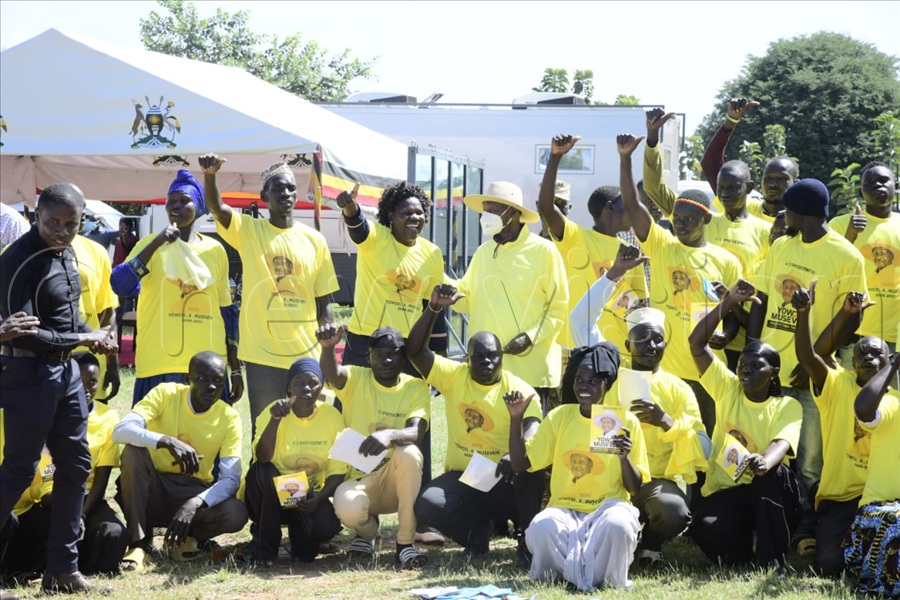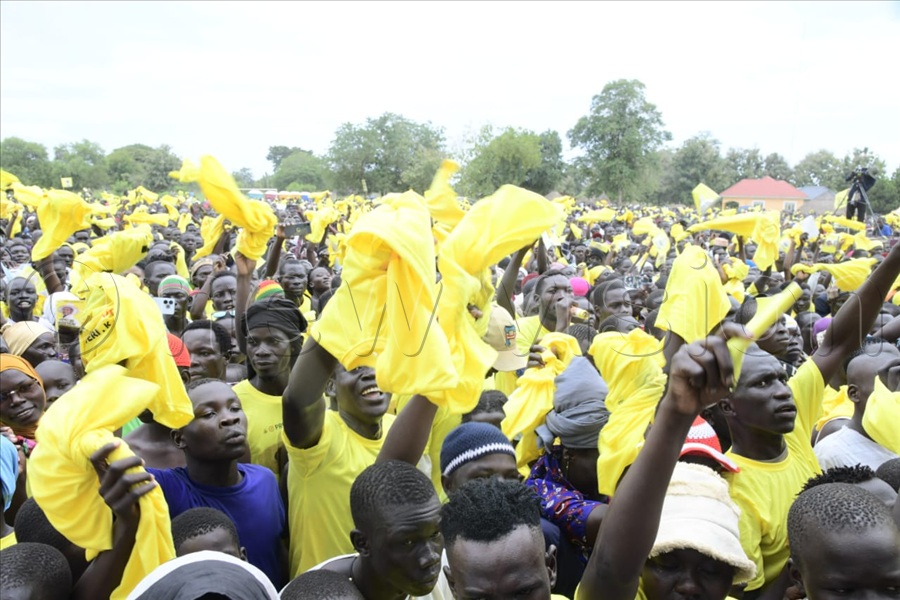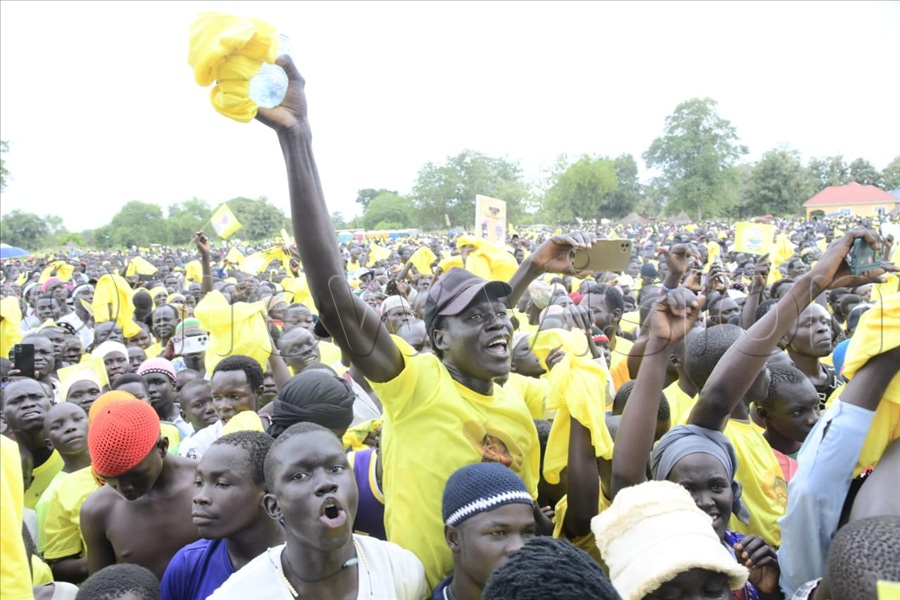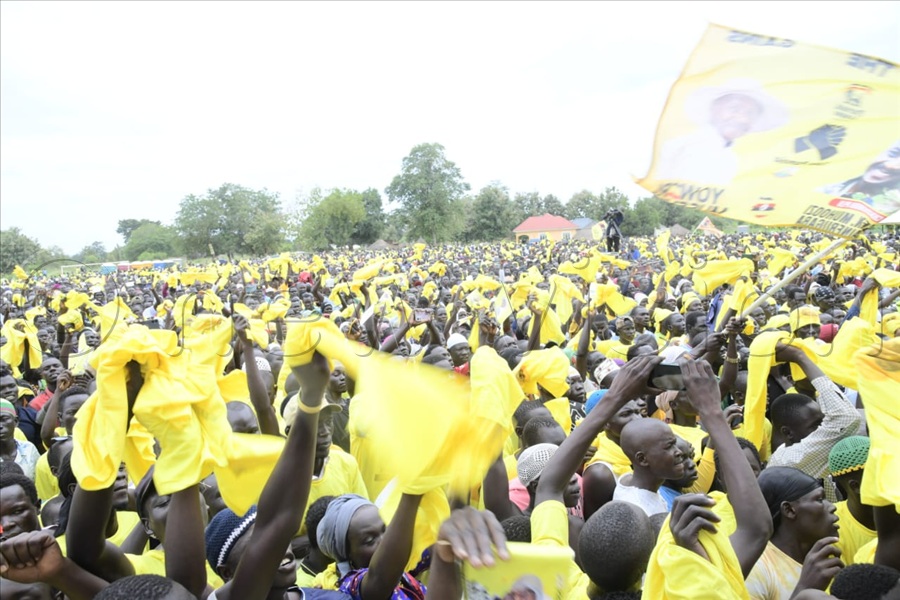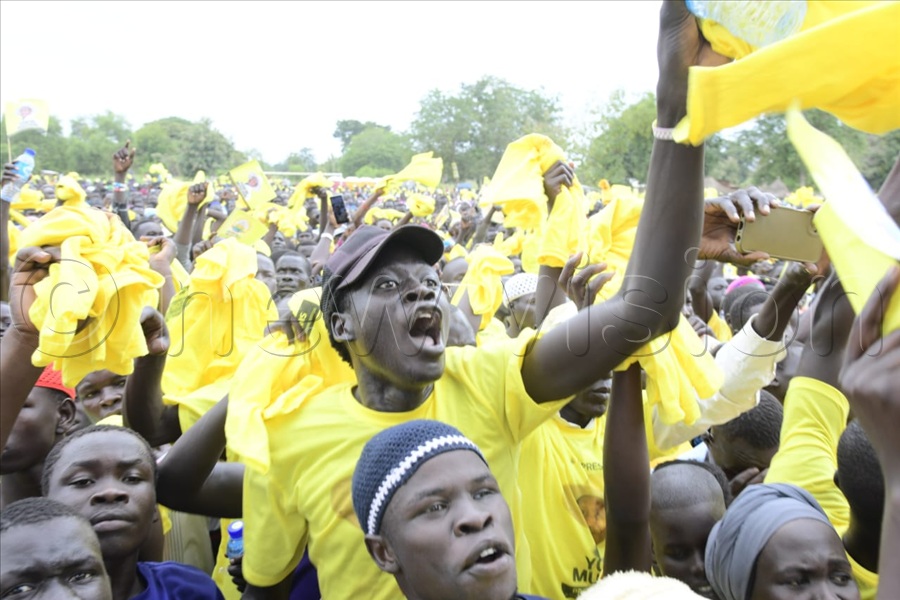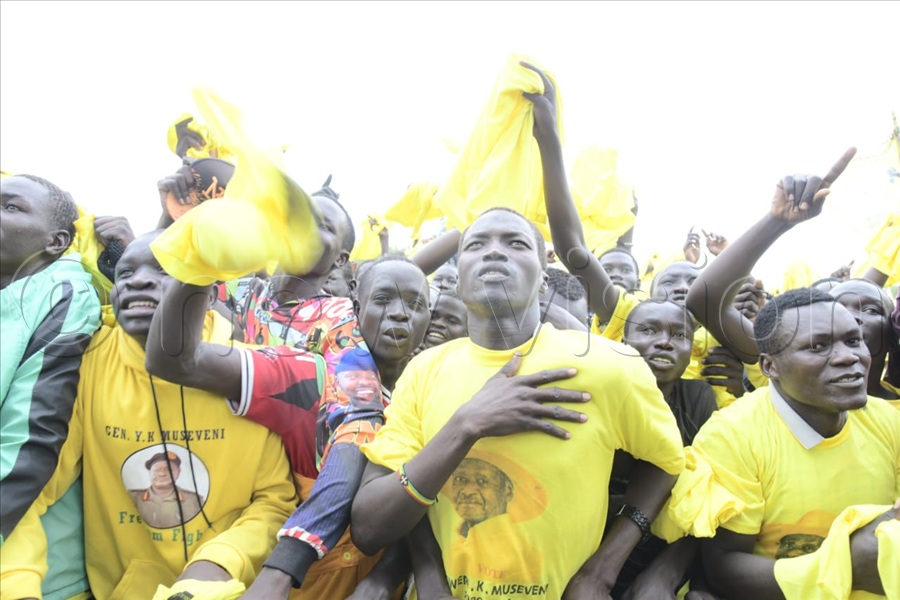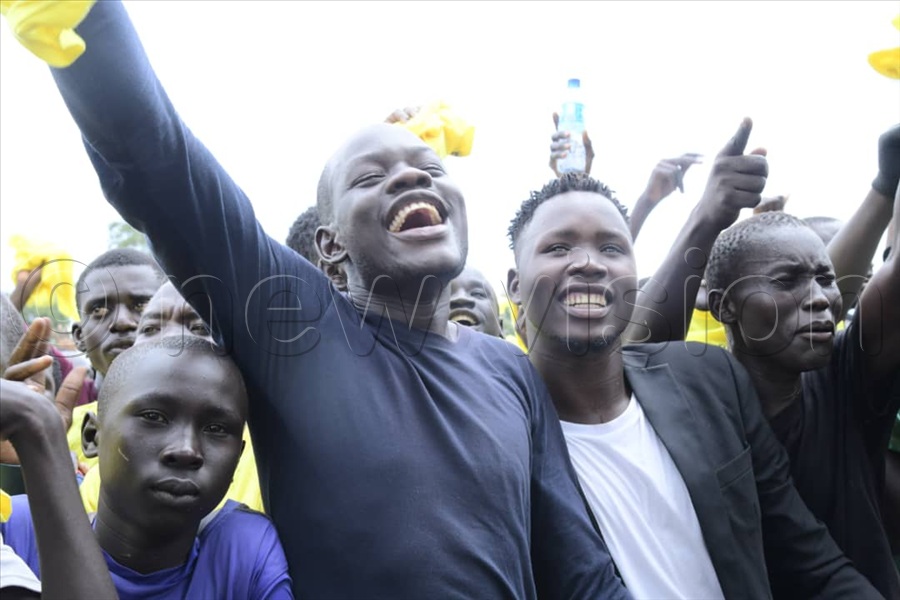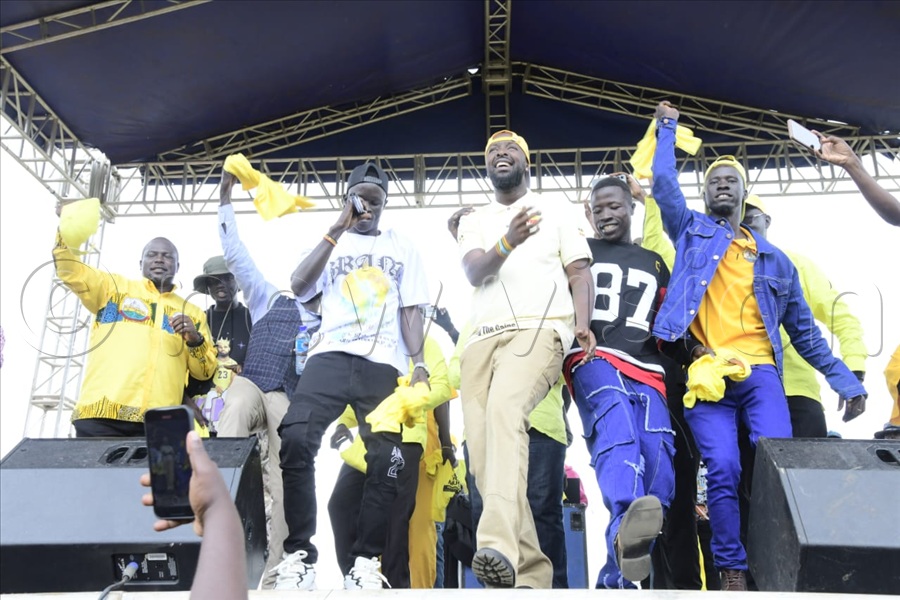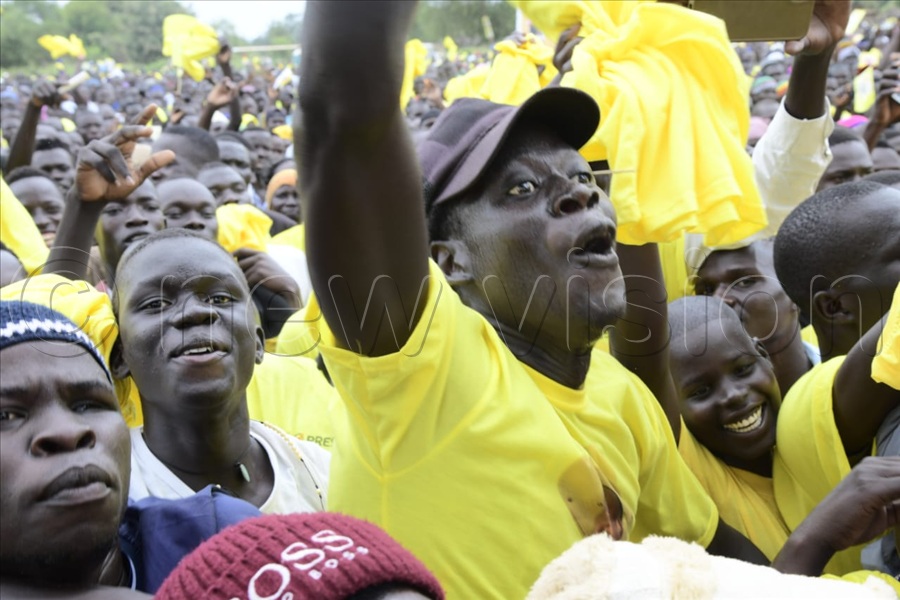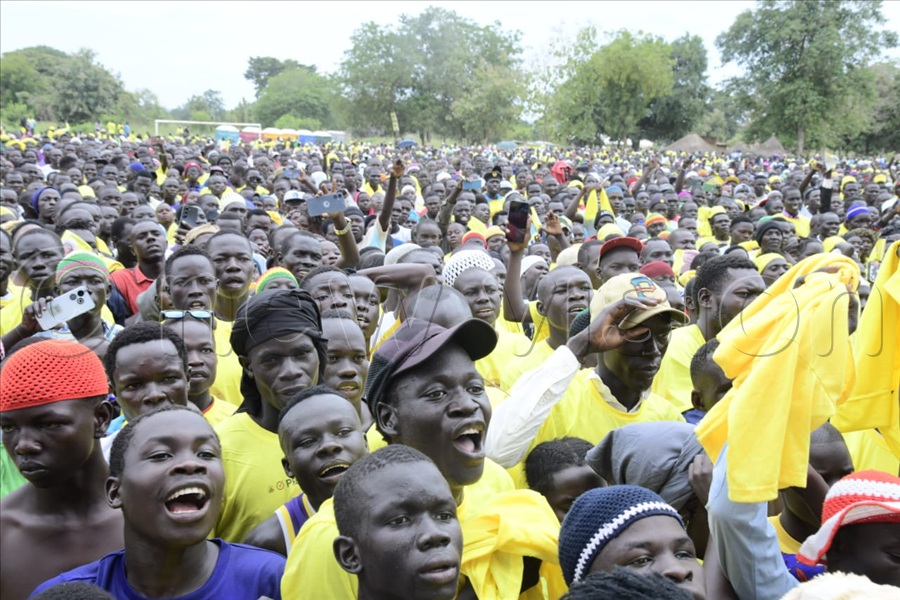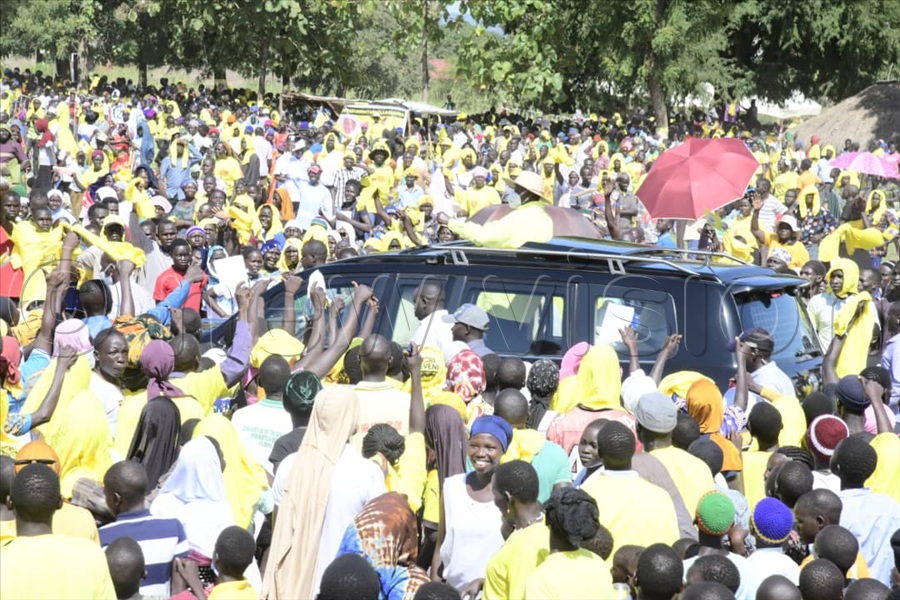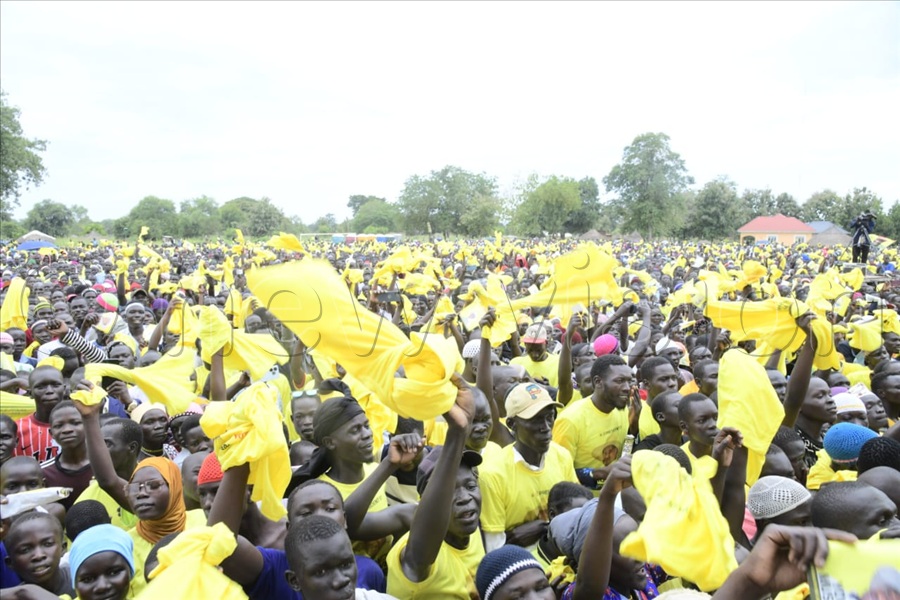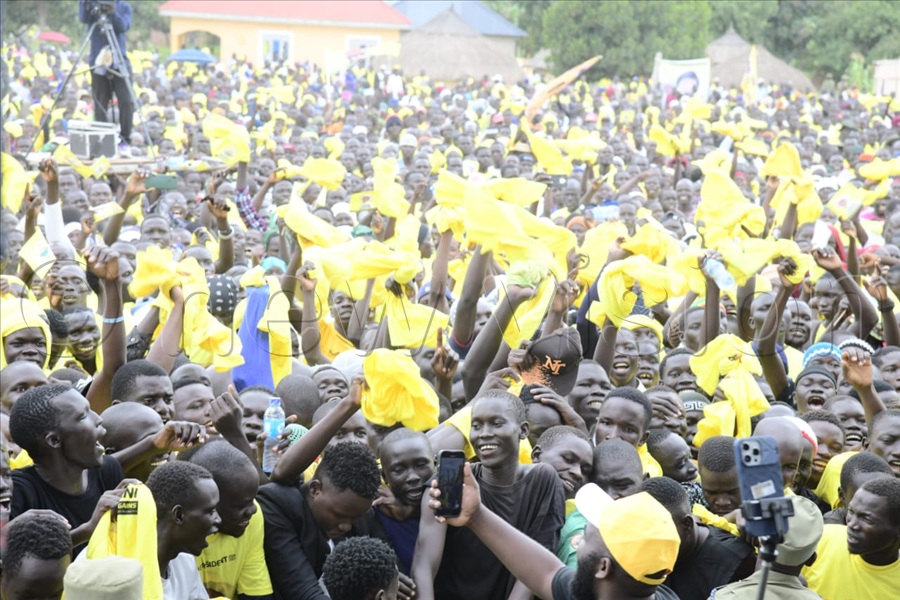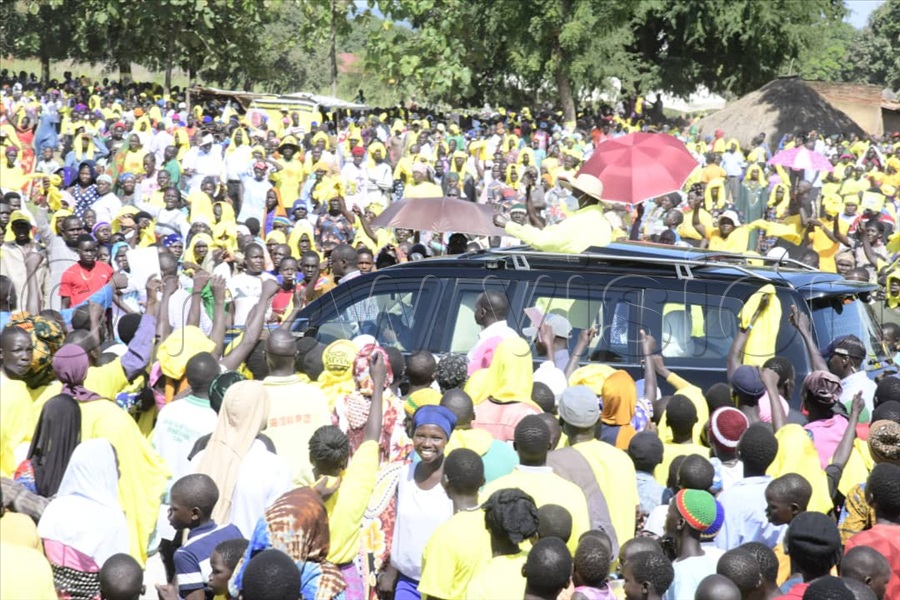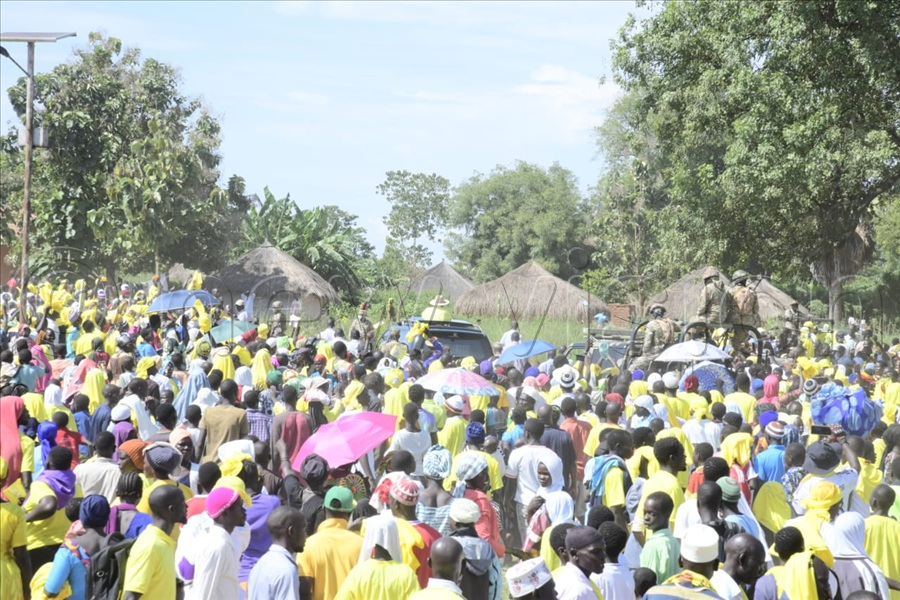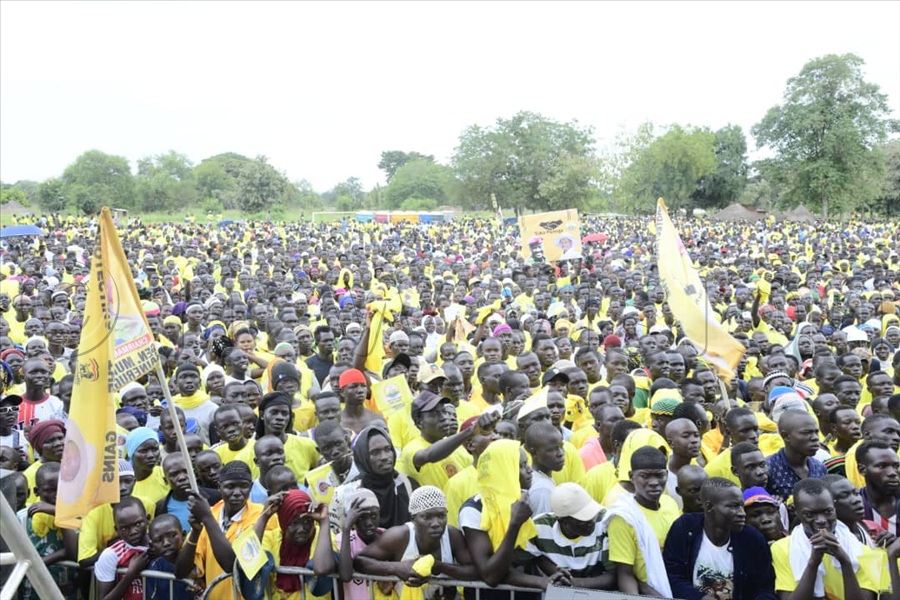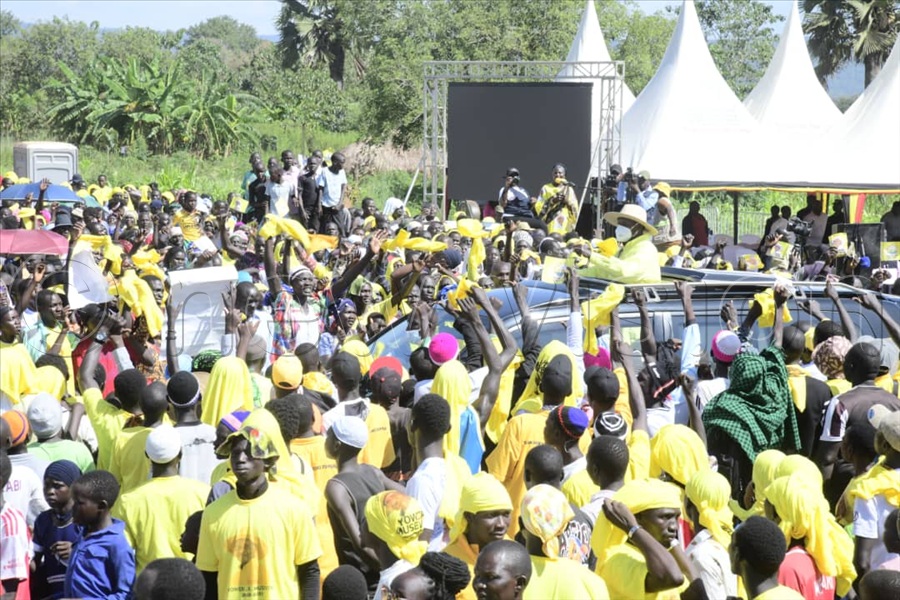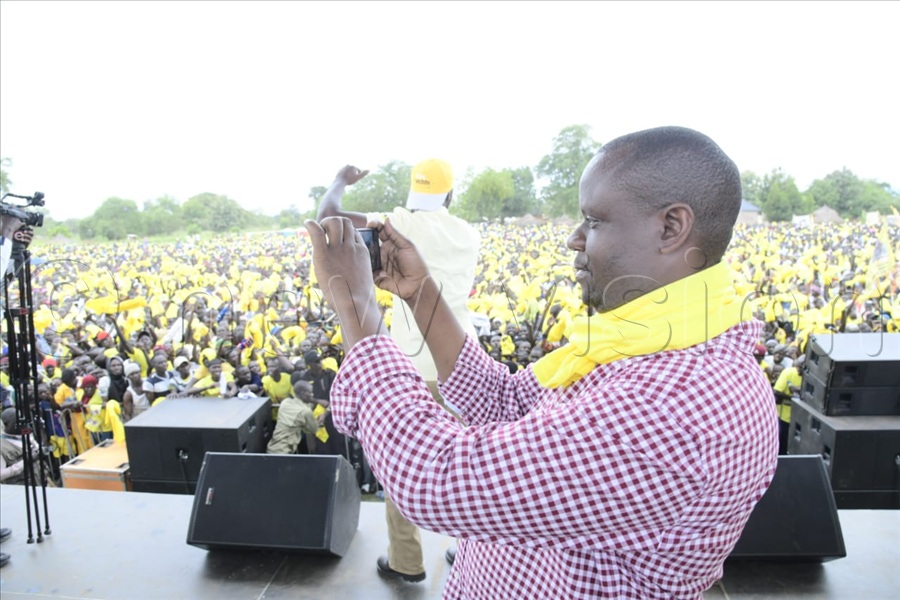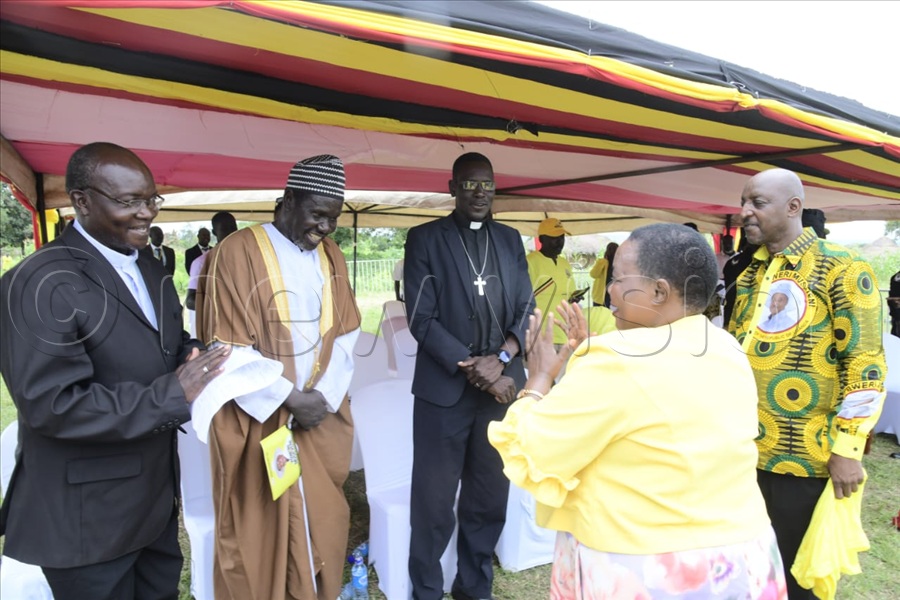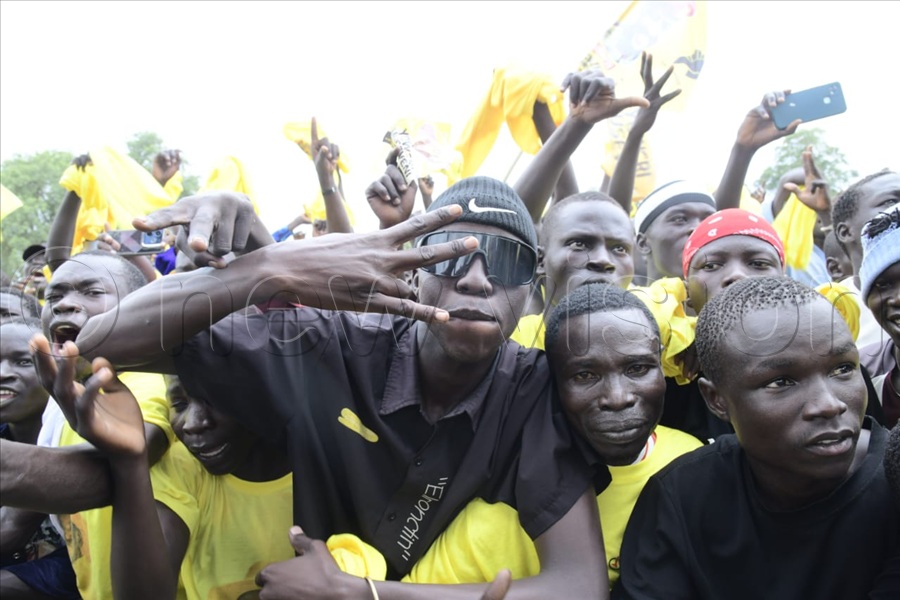📸 Electricity, road infrastructure are Museveni's priorities for Obongi
“All these roads will be worked on, and Obongi will no longer be isolated,” he declared.The pledge is part of a broader infrastructure push across the West Nile sub-region. The President highlighted ongoing or planned tarmacking projects such as the Manibe–Jule road, Nebbi–Goli–Paidha–Zombo–Vura road, and the Laropi–Moyo road.
Museveni arrived at Lionga Grounds, Obongi, standing through a car sunroof, flashing a thumbs-up sign and smiling at thousands of his supporters who braved the scorching sun to listen to him. (Credit: Eddie Ssejjoba)
OBONGI - President Yoweri Museveni has pledged to settle what he called the government’s “two major debts” to Obongi District—electricity connection and road infrastructure, assuring residents that the long-standing challenges of isolation and underdevelopment will soon be history.
On Friday, October 17, Museveni arrived at Lionga Grounds, Obongi, standing through a car sunroof, flashing a thumbs-up sign and smiling at thousands of his supporters who braved the scorching sun to listen to him.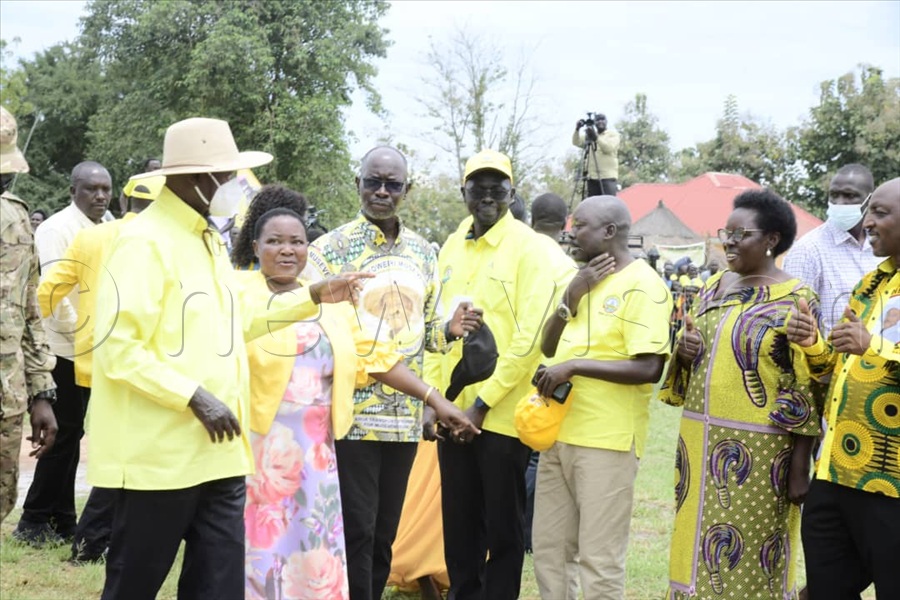
“We have two debts with Obongi, and one is electricity. Money has been secured to bring electricity to Obongi. We are going to use a World Bank loan to do this,” President Museveni said. (All Photos by Eddie Ssejjoba)
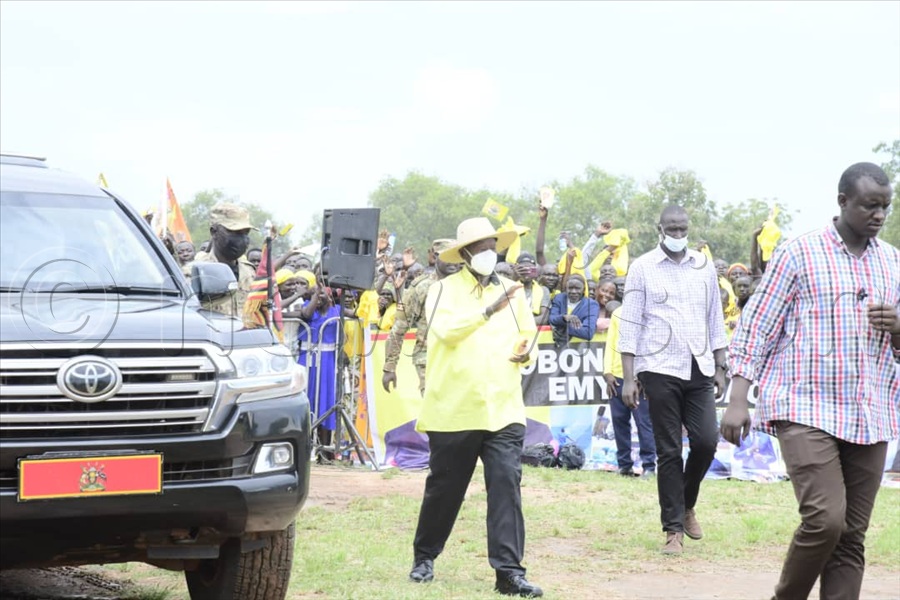
He was wearing black trousers, a long-sleeved yellow shirt and a trademark hat.
Addressing thousands of National Resistance Movement (NRM) supporters, the President, who is also the party's Presidential flagbearer, said the government has already secured funding to bring electricity to the district and begin tarmacking its key roads within the current financial year.
“We have two debts with Obongi, and one is electricity. Money has been secured to bring electricity to Obongi. We are going to use a World Bank loan to do this,” President Museveni said.
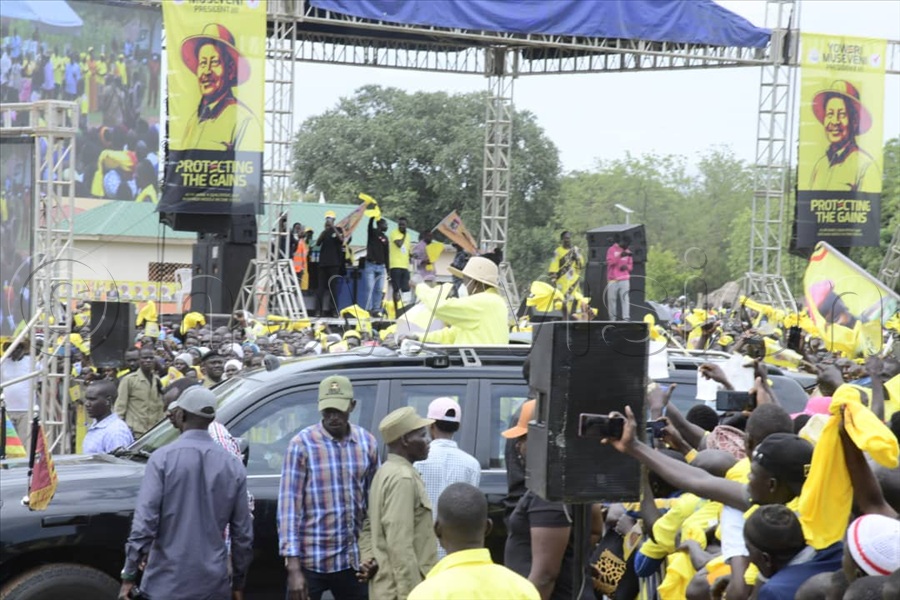
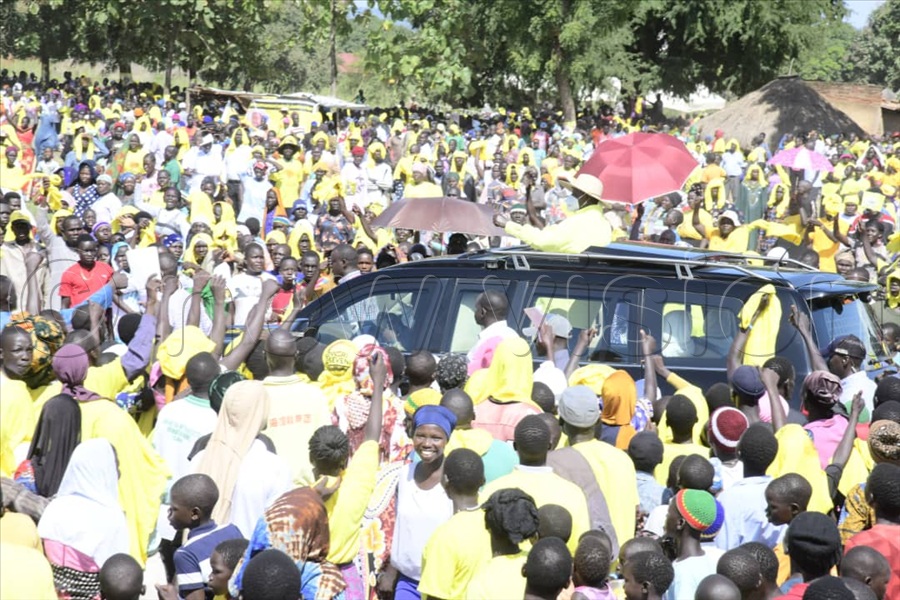
“They’re now doing procurement, looking for the right company to do the work. That debt is paid because the money is already there,” he added.
The President noted that Obongi and Buvuma remain the only two districts in Uganda not connected to the national electricity grid, a situation he said would soon be corrected.
According to President Museveni, the construction of the power line connecting Obongi will commence before the end of the current financial year, marking a turning point in the district’s energy access.
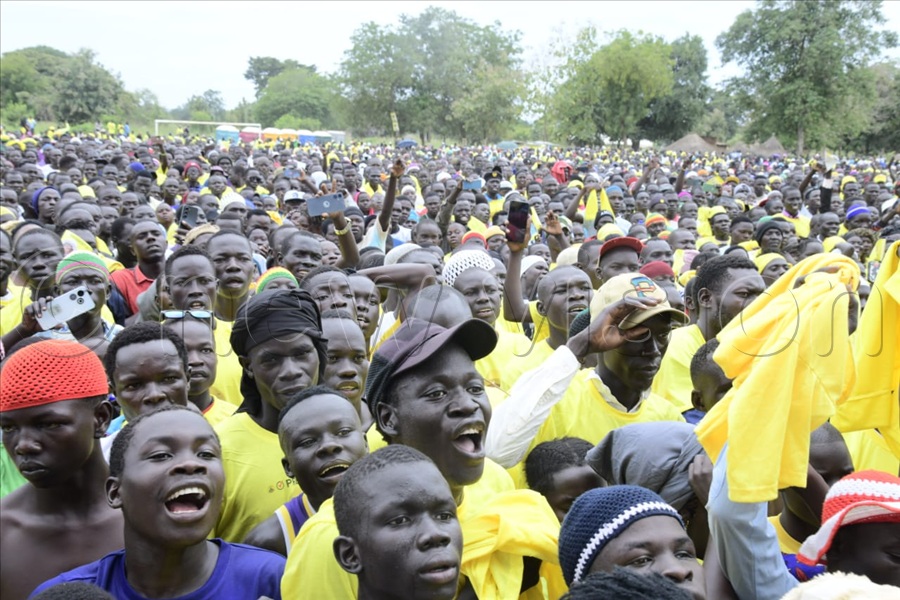
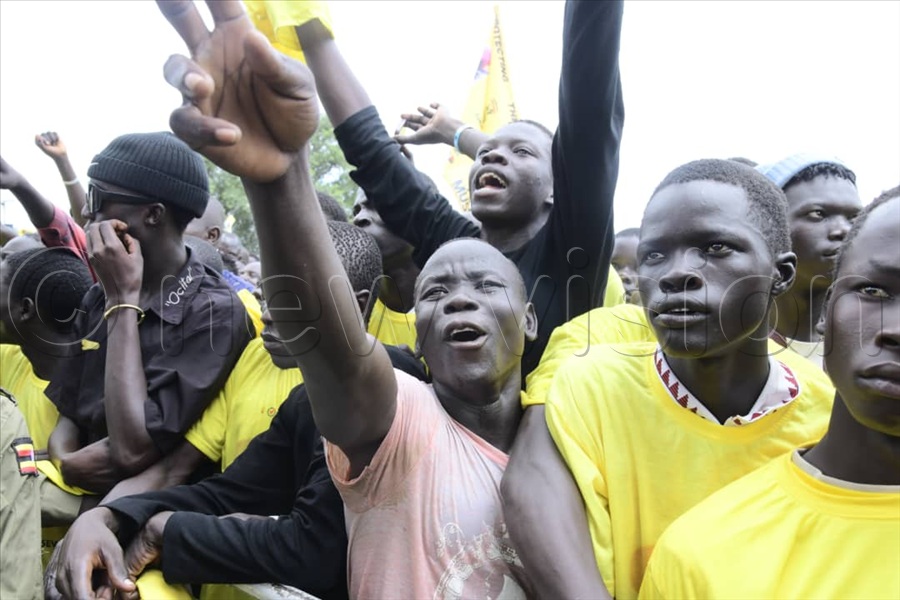
He also listed key road projects earmarked for upgrading, including the 132-kilometre Noko–Obongi–Adjumani–Owafa–Lubala–Kurikiringa road, and another route linking Goli–Panyimur–Pakwach–Rhinocamp–Obongi, which he said would boost tourism along the Nile corridor.
“All these roads will be worked on, and Obongi will no longer be isolated,” he declared.
The pledge is part of a broader infrastructure push across the West Nile sub-region. The President highlighted ongoing or planned tarmacking projects such as the Manibe–Jule road, Nebbi–Goli–Paidha–Zombo–Vura road, and the Laropi–Moyo road.
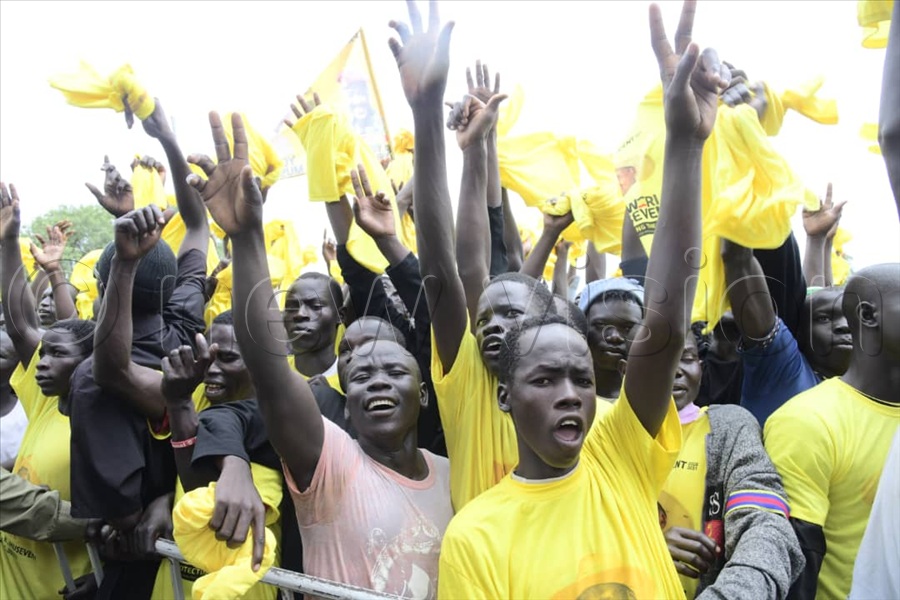
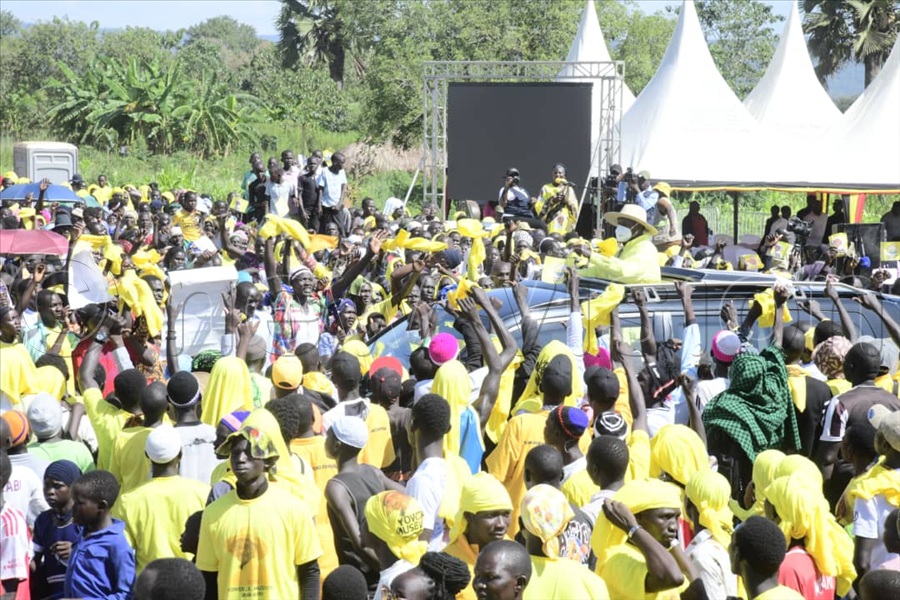
President Museveni used the occasion to reflect on Uganda’s infrastructure transformation under NRM leadership.
“When the NRM came into government, the tarmac road ended at Karuma on that side and Gulu on this side. Now tarmac has reached Koboko and Oraba, and from Gulu to Atiak, Adjumani to Laropi, Moyo—soon we shall link Adjumani and Obongi to these roads,” he said.
While pledging major road upgrades, President Museveni also criticised district authorities for failing to maintain existing murram roads despite the availability of government equipment.
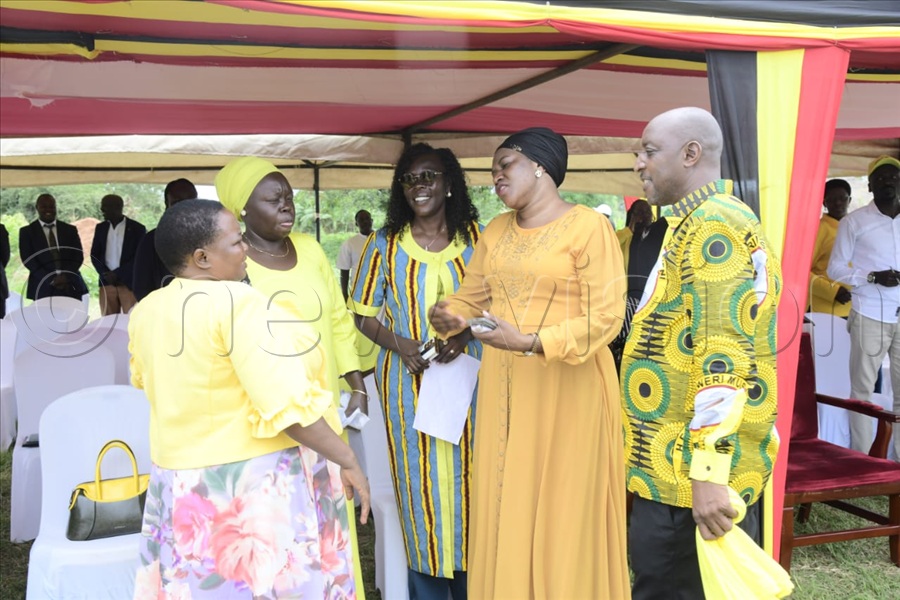
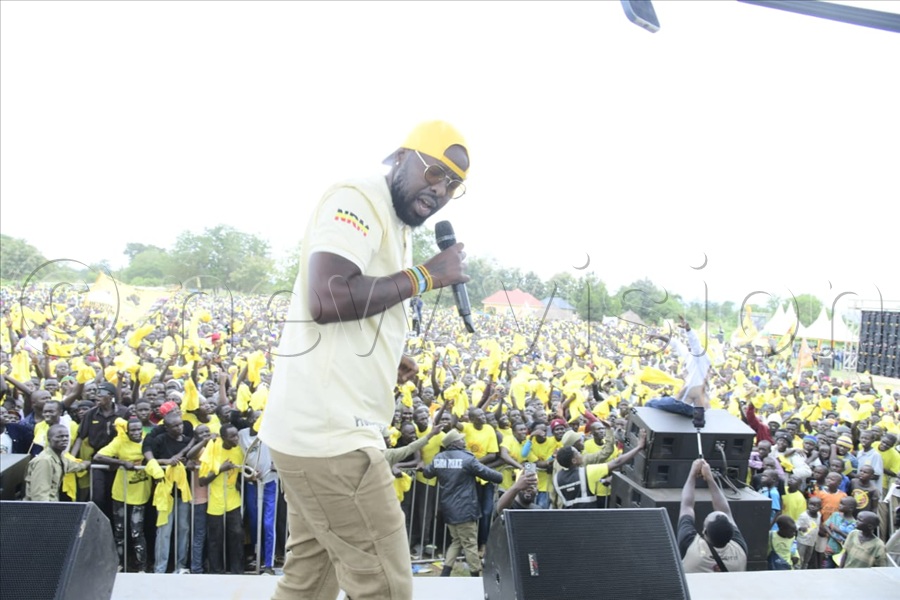
“Even if the road is not tarmacked, it should be maintained in good condition and passable. In the West Nile, we have two government stations in Arua and Moyo, with all the necessary road equipment—graders, rollers, bulldozers, tippers. You wonder why the roads remain impassable. If somebody is sleeping, I’m going to wake them up,” he said.
The President also urged local leaders to take responsibility for regular road maintenance, saying neglect undermines government investment.
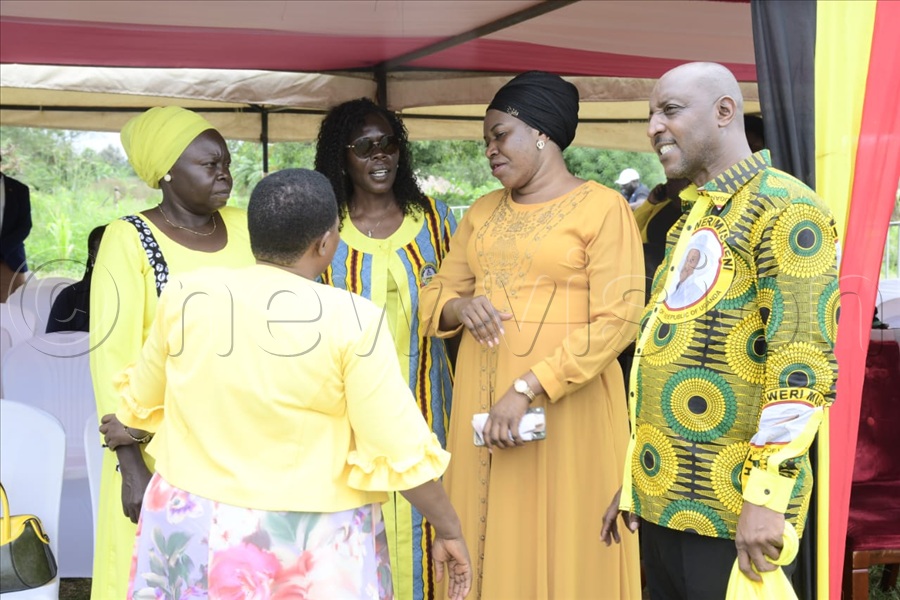
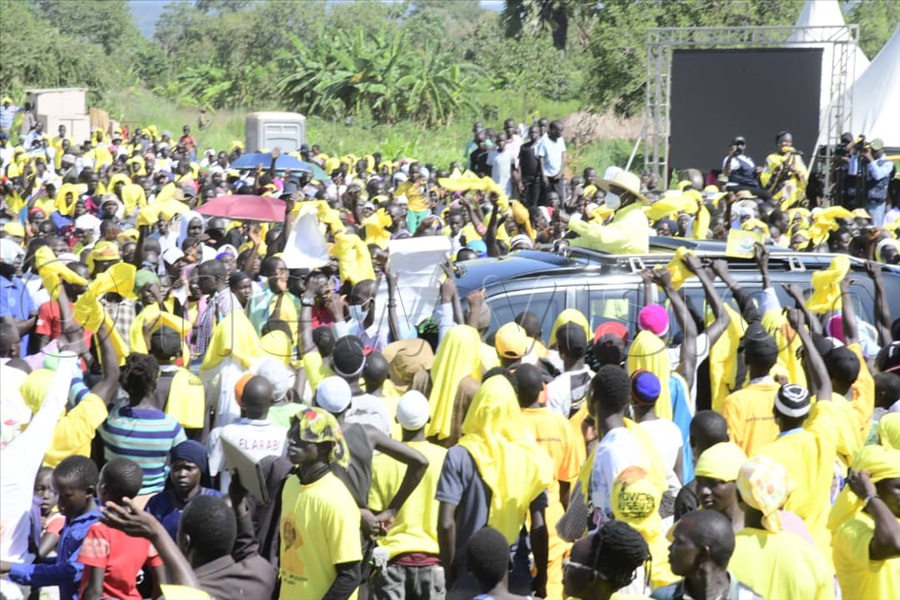
President Museveni took the supporters back to the 1980s, recalling his early familiarity with Obongi’s challenges when the area was still part of Moyo and Adjumani districts.
“When I came into the government, I was aware of the isolation of Obongi. It was part of the Moyo and Adjumani districts. Although their population was small, I said no, these people need their own corner. So, we gave you a district deliberately because of geography and isolation,” he said.
Obongi District, officially created in 2019, now has a population of about 142,000 people, according to the 2024 census.
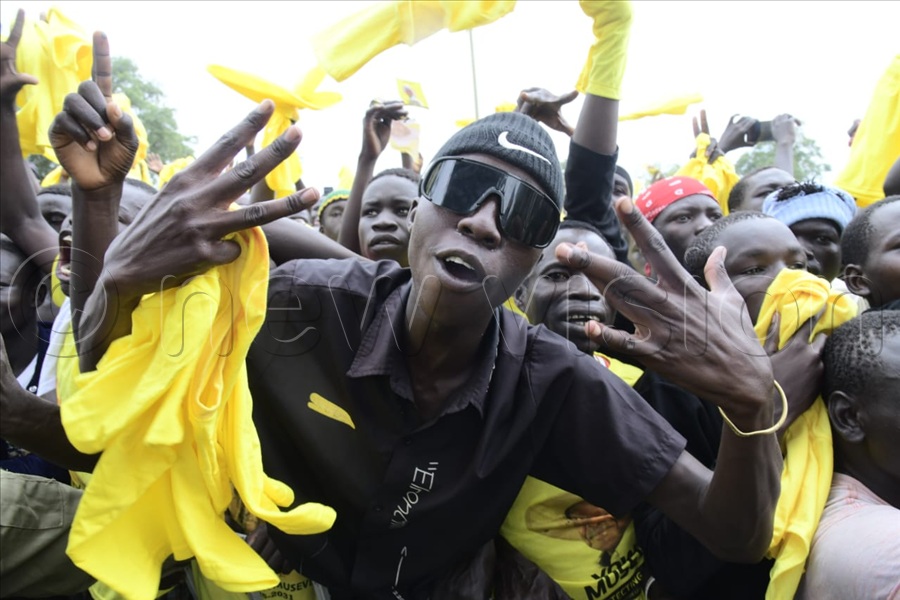
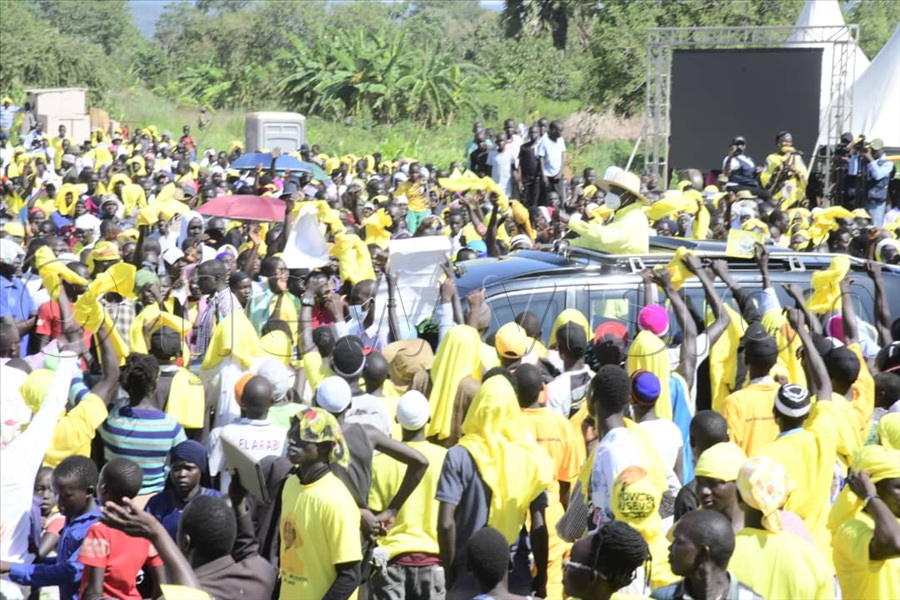
President Museveni said his return was both to “remind residents of NRM’s past commitments” and to present the party’s new manifesto.
The NRM Manifesto: Peace, Unity and National Strength
The President told the supporters that the NRM’s 2026 manifesto is built on seven core pillars, but he focused on three—peace, development, and wealth creation.
Museveni noted that their NRM ideology of unity, patriotism and Pan-Africanism has enabled them to unite the politics of Uganda but also to create institutions such as the army, comprising all Ugandans.
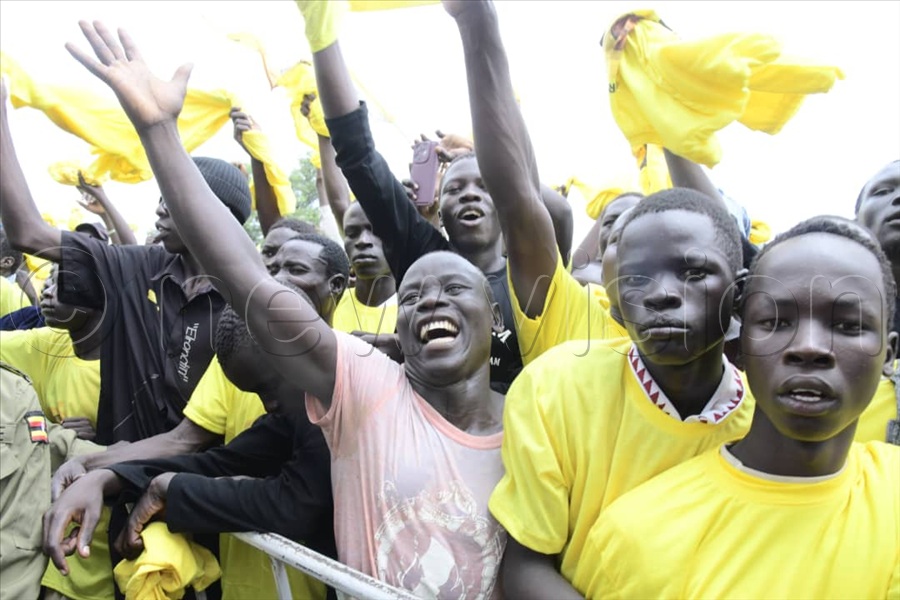
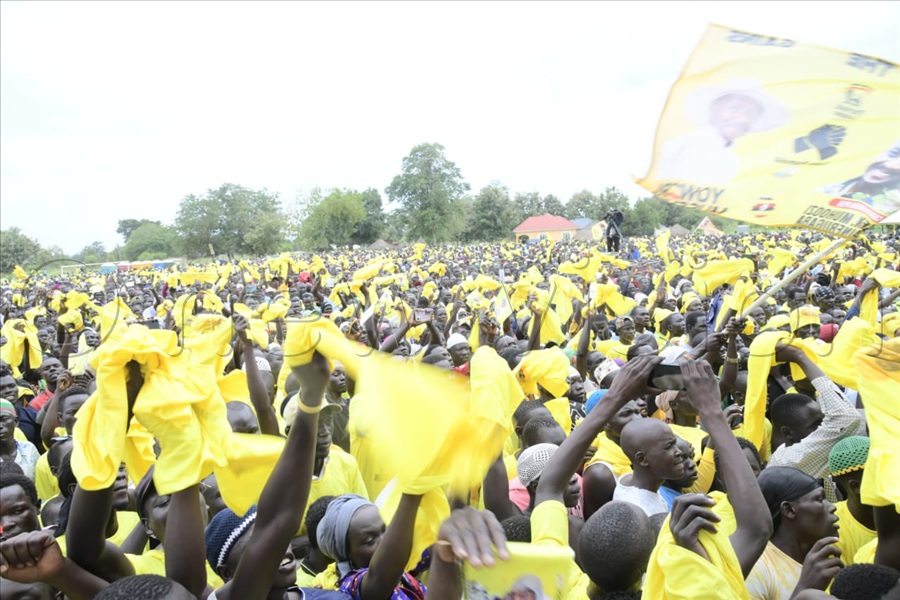
“We have a very strong army and other security institutions which have been able to guard peace together with united defence and united politics of the country. That is how Uganda is like an island of peace in this part of the world. You can see people from other countries are here as refugees,” he said.
He told the people of Obongi that when he first arrived in their area in 1979, he saw their isolation and understood the challenges.
“That is why, when we entered government, we worked to create Obongi district so you could have your own corner,” he told the crowd at Lionga Boma Grounds.
_____________________________
Below is a picture highlight as captured by Eddie Ssejjoba;